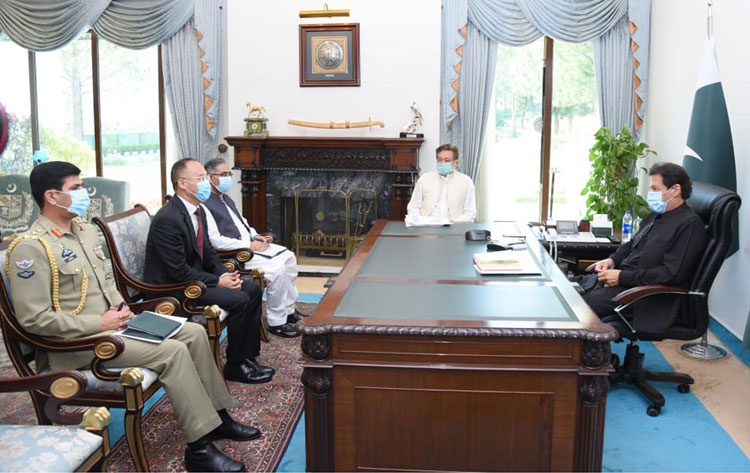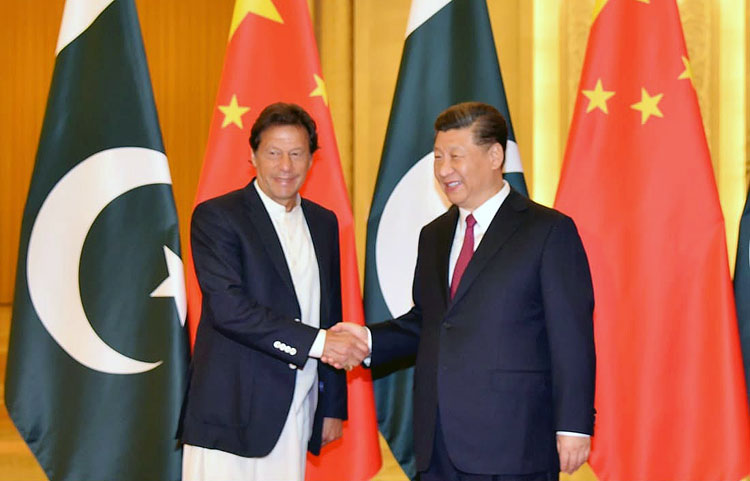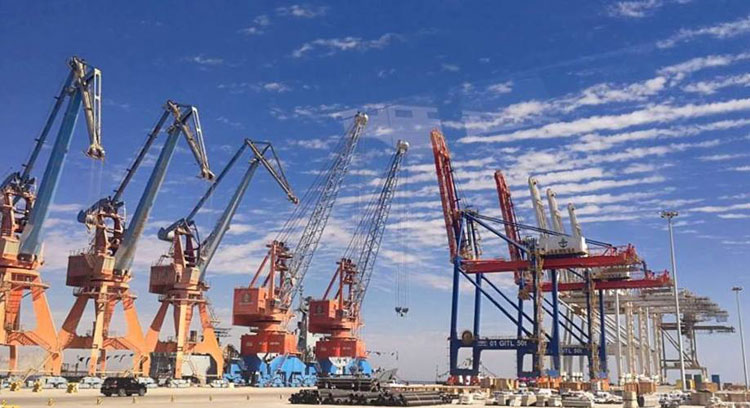INDIAN ARMED FORCES CHIEFS ON OUR RELENTLESS AND FOCUSED PUBLISHING EFFORTS

The insightful articles, inspiring narrations and analytical perspectives presented by the Editorial Team, establish an alluring connect with the reader. My compliments and best wishes to SP Guide Publications.

"Over the past 60 years, the growth of SP Guide Publications has mirrored the rising stature of Indian Navy. Its well-researched and informative magazines on Defence and Aerospace sector have served to shape an educated opinion of our military personnel, policy makers and the public alike. I wish SP's Publication team continued success, fair winds and following seas in all future endeavour!"

Since, its inception in 1964, SP Guide Publications has consistently demonstrated commitment to high-quality journalism in the aerospace and defence sectors, earning a well-deserved reputation as Asia's largest media house in this domain. I wish SP Guide Publications continued success in its pursuit of excellence.
- Operation Sindoor: Resolute yet Restrained
- India’s Operation Sindoor Sends a Clear Message to Terror and the World – ‘ZERO TOLERANCE’
- Japan and India set forth a defence cooperation consultancy framework, talks on tank and jet engines
- Terrorist Attack in Pahalgam in Kashmir: Unfolding a long surgical war against PAK
- Lt General Pratik Sharma takes over Command of Indian Army's Northern Command
Pearl in the String
Pakistan’s Prime Minister Imran Khan earlier had some misgivings on the economic viability of CPEC and that it represents a debt trap but on May 24, 2021, he met China’s Ambassador to Pakistan and reiterated the highest priority accorded by his government to the CPEC
 |
The Author is former Director General, Army Air Defence and was a member of Integrated Guided Missile Development Programme. |

China has been trying to encircle India by having pacts with Indian Ocean Region countries in the garb of infra structure development named ‘The Belt and Road (BRI)’ initiative. It is a global infrastructure development strategy adopted by the Chinese government in 2013 to invest in nearly 70 countries and international organisations and is central to Chinese President’s Xi Jinping's foreign policy. The BRI aims to connect Asia to Europe, and the initiative has steadily expanded economic corridors and projects as far as Africa. World Bank's Chief Economist Carmen Reinhart commented that 60% of the lending from Chinese banks is to developing countries where sovereign loans are negotiated bilaterally and in secret. Sovereign loan or debt means debt incurred by a government, usually in the form of bonds issued in foreign currencies and sold to foreign investors. China is the largest bilateral lender in the world with loans being backed by collateral such as rights to a mine, a port or money. Critics call it a ‘debt trap diplomacy’ carried out by offering excessive credit to a country with the intention of extracting economic or political concessions when it becomes unable to honour its debt obligations. The conditions of the loans are often not made public and the loaned money is typically used to pay contractors from the creditor country.
String of Pearls Strategy
The aim is to encircle India with a string of maritime bases (called string of pearls) from where China’s Defence Forces can operate when required. Currently, these bases are - Coco Island, Myanmar which is located just a few km north of Andaman and Nicobar Islands; Hambantota port, Sri Lanka; Chittagong port, Bangladesh; Marao Atoll, Maldives; Gwadar port complex, Pakistan which is part of originally $47 billion ($62 billion in 2020) China Pakistan Economic Corridor (CPEC) project and the Port of Djibouti which is strategically located at the crossroads of one of the busiest shipping routes in the world, linking Europe, the Far East, the Horn of Africa and the Persian Gulf. Out of the above, Gwadar and Hambantota are comparatively critical in compromising India’s security.
China is the largest bilateral lender in the world with loans being backed by collateral such as rights to a mine, a port or money
CPEC
It is a $62 billion project which will connect Kashgar in Xinjiang province of China, with Gwadar port in Baluchistan through a vast network of roads. It includes other infrastructure projects such as dams, hydropower projects, railways, and pipelines. CPEC will provide Pakistan with a fully developed Gwadar Port, energy, transport infrastructure and industrial cooperation. Gwadar Port complex is being developed on the lines of Newark which is one of the major air, shipping, and rail hubs of the US. The Chinese investments are supposed to boost Pakistan’s $274 billion GDP by over 15 percent. Energy projects such as Karot Hydropower project, Karachi Nuclear power plant and World’s largest solar power plant in Pakistan’s Punjab Province etc., are also part of this initiative.The infrastructural enhancement includes construction of a 2,000 km of road and rail network worth $10.63 billion.

Gwadar Port Complex: A Snap Shot
- The development of Gwadar Port Complex is a key element of the CPEC whose Phase 1 was inaugurated in 2007. China Overseas Port Holding Company (COPHC) has granted $1.02 billion dollars’ worth of contracts for Phase Two of the port which is progressing slowly. Gwadar Port Authority owns this Port and COPHC operates it. The expanded port will be located near a 2,282-acre free trade area in Gwadar which is being modelled on the lines of the Special Economic Zones of China. It is projected that Gwadar port will eventually handle one million tons of cargo annually.
- According to the February 2013 agreement, ninety-one percent of revenue produced by port would go to COPHC and nine percent to Gwadar Port Authority.
The aim is to encircle India with a string of maritime bases (called string of pearls) from where China’s Defence Forces can operate when required
- The sea route through the Straits of Malacca is almost twelve-thousand km while the distance from port to XUAR (Xinjiang Uyghur Autonomous Region) province is almost three-thousand km and another thirty-five hundred km from Xinjiang to the eastern coast of China. The land route is shorter and safer for China’s energy requirements being imported from Middle East through the Strait of Malacca. Thus China has committed $1.153 billion dollars to finance port development and construction projects. This includes the construction of one hundred and forty million dollars for the project East Bay Expressway to link the port with N-10 (Makran Coastal Highway).
- Pakistan has leased the Gwadar Port Complex to COPHC for 40 years in April 2017. The final expansion of the port and ancillary systems will be undertaken by the China.
- Apart from 91 percent share of the revenue from the operations of the port and the terminal; 85 percent of the revenue generated by the Special Economic Zone will also go to China’s COPHC.
- China also has immense strategic and geopolitical advantages with access to the Indian Ocean Region over and above the economic advantage of the major portion of the revenue from the port and the Special Economic Zone accruing to China.

Pakistan’s Concerns
Presence of Chinese troops. Due to security threats to the Chinese work force employed on CPEC projects, the Pakistani Army has set up a special division to provide security for them. In addition China has also deployed thousands of its security personnel to augment and oversee security of Chinese personnel. This has been objected by many Pakistani citizens who visualise a threat to Pakistan’s sovereignty.
Baluchistan. The insurgent groups in Baluchistan are opposing CPEC as it disturbs the ethnic balance of the region. The development of Gwadar port is key to the success of CPEC and it is located in Baluchistan thus any unrest in this region would seriously compromise Pakistan’s economic and strategic interests.
Pakistan has leased the Gwadar Port Complex for 40 years to China who gets immense strategic and geopolitical advantages with access to the Indian Ocean Region, over and above the economic advantage of the major portion of the revenue from the SEZ and the port
Terrorism. There are about 49 banned/under observation terrorists group in Pakistan including some being based in Baluchistan who can pose a serious threat to CPEC. Pakistan also believes that India is keen on sabotaging CPEC by funding and training insurgency elements in Baluchistan.
India’s Concerns
- The planned CPEC route passes through POK and Gilgit-Baltistan, which India claims to be its own.This is the reason that the World Bank refused to grant loans for some of the projects as they were in disputed territory. CPEC will bring Pakistan and China closer against India.
- Due to great economic and strategic advantage accruing to China, it will support Pakistan in its dispute with India over Kashmir.
- After the CPEC is completed, China will have access to the length and breadth of Pakistan and open routes for China’s Armed Forces to Punjab and Rajasthan.
- Some local reports suggest that Pakistan has covertly agreed to allow China to base its troops in Gwadar and Gilgit Baltistan, the latter is in close proximity to the region where India’s stand off with China is taking place.
- China is reinforcing its strategic investments by dealing directly with Pakistan’s powerful military and their construction agency, Frontier Works Organisation (FWO), which has acquired many CPEC-related contracts.
Pakistan’s Prime Minister Imran Khan earlier had some misgivings on the economic viability of CPEC and that it represents a debt trap but on May 24 2021 he met China’s Ambassador to Pakistan and reiterated the highest priority accorded by his government to the CPEC and the firm commitment to expeditiously complete its projects. Greater danger lies for India if Pakistan cannot service its debt and accords 99 year lease to China of Gwadar Port Complex which will give China free access to the Indian Ocean and also anchoring its Navy at Gwadar Port complex.





